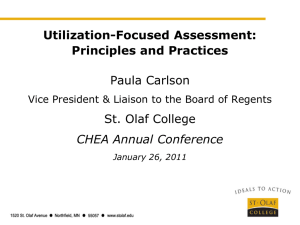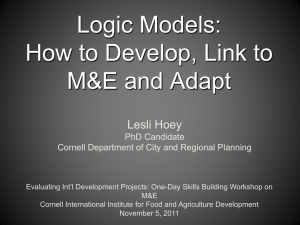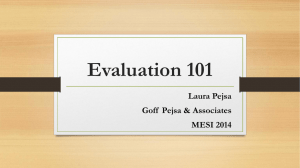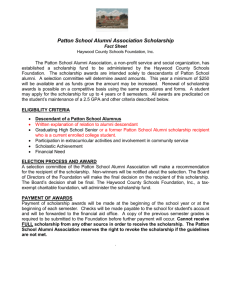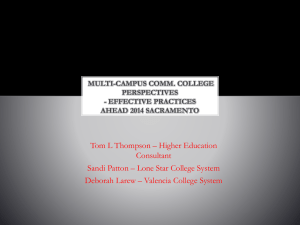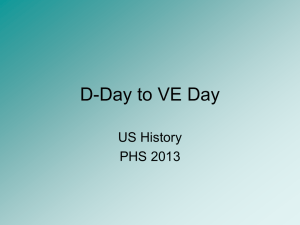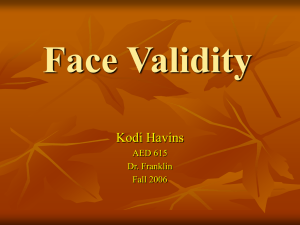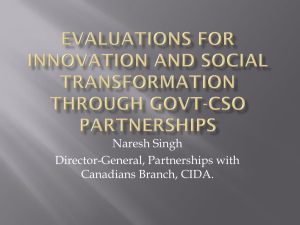Theory: Learning ad Training Evaluation Theory
advertisement
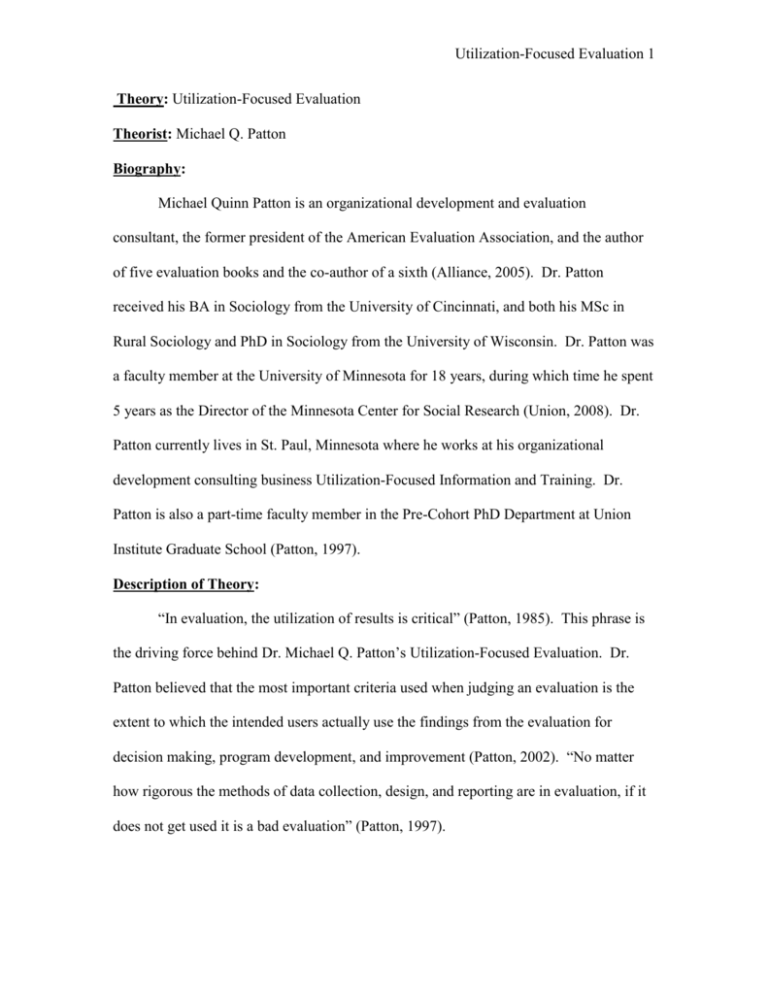
Utilization-Focused Evaluation 1 Theory: Utilization-Focused Evaluation Theorist: Michael Q. Patton Biography: Michael Quinn Patton is an organizational development and evaluation consultant, the former president of the American Evaluation Association, and the author of five evaluation books and the co-author of a sixth (Alliance, 2005). Dr. Patton received his BA in Sociology from the University of Cincinnati, and both his MSc in Rural Sociology and PhD in Sociology from the University of Wisconsin. Dr. Patton was a faculty member at the University of Minnesota for 18 years, during which time he spent 5 years as the Director of the Minnesota Center for Social Research (Union, 2008). Dr. Patton currently lives in St. Paul, Minnesota where he works at his organizational development consulting business Utilization-Focused Information and Training. Dr. Patton is also a part-time faculty member in the Pre-Cohort PhD Department at Union Institute Graduate School (Patton, 1997). Description of Theory: “In evaluation, the utilization of results is critical” (Patton, 1985). This phrase is the driving force behind Dr. Michael Q. Patton’s Utilization-Focused Evaluation. Dr. Patton believed that the most important criteria used when judging an evaluation is the extent to which the intended users actually use the findings from the evaluation for decision making, program development, and improvement (Patton, 2002). “No matter how rigorous the methods of data collection, design, and reporting are in evaluation, if it does not get used it is a bad evaluation” (Patton, 1997). Utilization-Focused Evaluation 2 In 1975 a team of evaluators, including Dr. Patton, became involved in a study sponsored by the National Institute of Mental Health. The qualitative study looked at the factors that seemed to explain variations in the actual use of health evaluations. The team interviewed evaluators, funders, and program managers to find out how evaluations findings were used. The results of the study showed that the information gathered was not what was expected or particularly useful. It was discovered that a great deal of time and energy went into and evaluation that did not provide useful information. This was the beginning of the utilized-focused evaluation (Patton, 1978). Utilization-Focused Evaluation is concerned about what will happen after the evaluation is completed and focuses on the usage of the evaluation results from the very beginning. Utilization-Focused Evaluation begins with the intended users and what information is important for them. The underlying question of every Utilization-Focused Evaluation should be “what difference will this study make?” (Patton, 2002). The utilization focus keeps findings from becoming too abstract, esoteric, or theoretical. Utilization-Focused Evaluation requires the evaluation to move from the general to the specific (Patton, 1997). The Achilles’ heel of Utilization-Focused Evaluation is the turnover of the primary intended uses (Patton, 1997). The framework of the entire evaluation was geared towards the results that the initial primary users needed, once those users were changed the entire validity of the evaluation become jeopardized. Since its inception, Utilization-Focused Evaluation has been confirmed and its major elements elaborated on by several others: Alkin, Daillak, and White 1979; King Utilization-Focused Evaluation 3 and Pechman 1982; Campbell 1983; Holley and Arboleda-Florez 1988; Ferguson 1989 (Patton 2002). Theory Measurement/Instrumentation: Criteria for Utilization-Focused Evaluation Questions (Patton, 1978) 1. It is possible to bring data to bear on the question. 2. There is more than one possible answer to the question, i.e., the answer is not predetermined by the phrasing of the question. 3. The identified decision makers want information to help answer the question. 4. The identified decision makers feel they need information to help them answer the question 5. The identified and organized decision makers and information users want to answer the question for themselves, not just for someone else. 6. They care about the answer to the question. 7. The decision makers can indicate how they would use the answer to the question, i.e. they can specify the relevance of an answer to the question for future action. Fourteen Fundamental Premises (Patton, 1997) 1. Commitment to intended use by intended users should be the driving force in an evaluation. 2. Strategizing about use is ongoing and continuous from the very beginning of the evaluation. 3. The personal factor contributes significantly to use. Utilization-Focused Evaluation 4 4. Careful and thoughtful stakeholder analysis should inform identification of primary intended users, taking into account the varied and multiple interests that surround any program, and therefore, any evaluation. 5. Evaluations must be focused in some way; focusing on intended use by intended users is the most useful way. 6. Focusing on intended use requires making deliberate and thoughtful choices. 7. Useful evaluations must be designed and adapted situationally. 8. Intended users’ commitment to use can be nurtured and enhanced by actively involving them in making significant decisions about the evaluation. 9. High-quality participation is the goal, not high quantity participation. 10. High-quality involvement of intended users will result in high quality, useful evaluations. 11. Evaluators have a rightful stake in an evaluation in that their credibility and integrity are always at risk, thus the mandate for evaluators to be active-reactive-adaptive. 12. Evaluators committed to enhancing use have a responsibility to train users in evaluation processes and the uses of information. 13. Use is different from reporting and dissemination. 14. Serious attention to use involves financial and time costs that are far from trivial. Report Prepared By: Jason Prather References: Alliance, (2005). Michael Quinn Patton Short Bio. Retrieved October 15, 2008, from http://www.allianceonline.org/annual_conference/chi05_keynotes.page Patton, M., (1978). Utilization-Focused Evaluation. Thousand Oaks: Sage Publications Utilization-Focused Evaluation 5 Patton, M., (1985). Culture and Evaluation. San Francisco: Josey-Bass Patton, M., (1997). Utilization-Focused Evaluation, 3rd Edition. Thousand Oaks: Sage Publications Patton, M. (2002). Qualitative Research & Evaluation Methods. Thousand Oaks: Sage Publications Stufflebeam, D., Madaus, G., & Kellaghan, T., (2000). Evaluation Models, Viewpoints on Educational and Human Services Evaluation. Boston: Kluwer Academic Publishers Union Institute, (2008). Faculty Directory. Retrieved October 16, 2008, from http://directory.tui.edu/Details.aspx?id=68242
